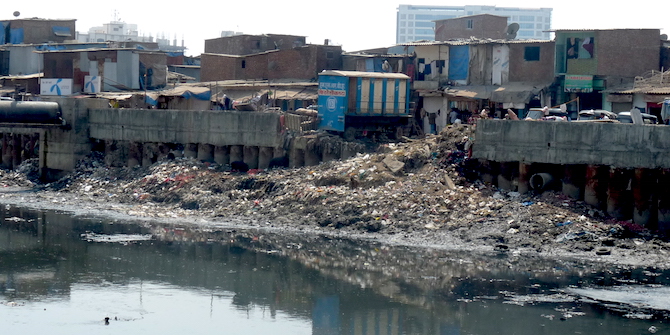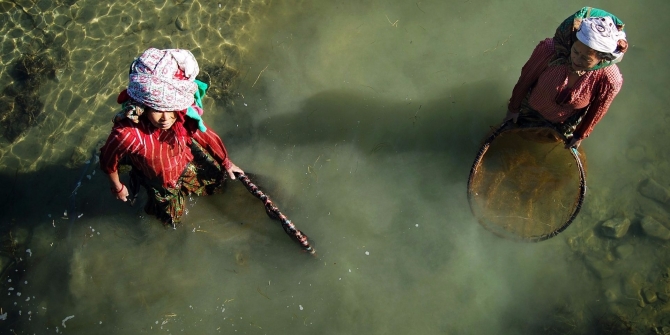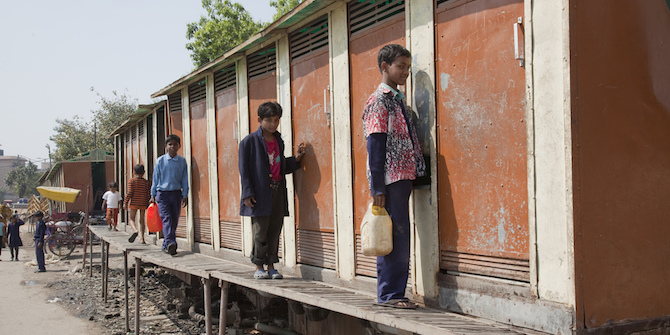In June, the newly-appointed Prime Minister Modi chose to visit Bhutan as his first official diplomatic venture. Abhismita Sen considers how the Indo-Bhutan relationship is unfolding under the new government, and argues that Bhutan stands to be crucial for India in its China containment strategy.
India has successfully made it to the good books of the United States, still the most dominant world power, as a part of its dual containment strategy of both the rise of China and increasing terrorism. China’s rise has been in some cases an apple of discord to both India and the United States, but ironically both these nations must maintain steady economic and trade relations with China.
Its large size, strategic location, rapid economic growth, educated and English-savvy middle classes, technological advancement, and better relations with the important players of world politics make India the only country suited enough to contain and compete with China.
Prime Minister Narendra Modi chose to visit Bhutan as his first official diplomatic venture. Previously, Bhutan was only received aid from India as an effort towards regional diplomacy, but was never seen as a neighbour worth additional effort. So, was this decision a mere generous gesture towards his motive of ‘political stability, progress, and peace’ in South Asia for the region’s ‘growth and development’, or was it one of his carefully crafted and conscious diplomatic decisions?
Located at the eastern end of the Himalayas, with China to its north and India surrounding all other sides, Bhutan stands to be a triple buffer state between India and its crucial neighbors Nepal, Bangladesh, and China.
The Indian state of Sikkim separates Bhutan from Nepal in the west, while the Indian states of Assam and West Bengal separate Bhutan from Bangladesh in the further south. Bhutan is important for India too, as it is close to the narrow ‘Chicken’s Neck’ corridor, the sole link between the Indian mainland and the Northeast. Thus Bhutan happens to be a crucial link between Indian governance and India’s perennially disturbed northeastern region.
Despite the elapse of two decades of India’s ‘look east’ policy, the northeastern states of India remain in a deplorable condition in terms of social, political and economic conditions, with highly centralised governance, elitist systems of bureaucracy, limited employment options, large scale insurgencies and poor standards of living. The Bharatiya Janata Party, built on clear Hindu beliefs and ideology, is desperately trying to morph itself into a secular mould to gel with the interests of the Indian minorities. The Indian northeastern population has a religious connectivity with its Bhutanese counterpart through Buddhist ideals.
India’s federal government has been largely unsuccessful in soothing the frequent and violent demand to secede. Better governance and infrastructural development through inclusion is vital for inducing a feeling of unity in northeastern Indians, especially with their geographical proximity and cultural equinity with adversary and powerful neighbors.
Insurgency is a sensitive issue across northeastern borders of India at large. The construction of newer roadways between Indian northeastern states and Bhutan will not only reduce transport costs incurred through longer routes of the well-developed states, but will also lead to the installation of security forces, thus combating insurgency.
Student and cultural exchanges between India and Bhutan will also produce new leaders for Bhutan and foster a sense of inclusiveness and security in the Buddhist and northeastern communities of India. On his recent visit to Bhutan, Prime Minister Modi announced plans to double scholarship money provided to Bhutanese students in India. Additionally, tourism initiatives between India’s northeastern states and Bhutan across the beautiful Himalayan belt can play a key role in socio-economic progress through newer enterprises and employment opportunities, infrastructure development and foreign exchange earnings.
India is set to launch the ‘National Mission on Himalayas’, an inter-governmental partnership to coordinate policy making and capacity building across states to create a ‘Himalayan Sustainability Fund’ and build a Central University dedicated to the Himalayan Technology and give due importance to the programmes devised to arrest the melting of Himalayan glaciers from which most of the rivers in North India originate. Through programs like this, states like Bhutan and Nepal are sure to greatly benefit in financial, cultural and political ways. Such initiatives would also foster conservation and preservation on Bhutan’s national administration and elevate the Human Development Indices of both the nations.
Bhutan is blessed with several fast flowing rivers, which can all be excellent sources of hydroelectricity. These power projects in Bhutan can provide clean, green energy to India in exchange for its own currency, which Bhutan uses to pay for its imports.
Prime Minister Modi’s policy of focus on the local region without chasing great powers has many shades. In the modern era, where India has carved a niche for itself in world affairs, it is quite imprudent for it to relapse back into its role as a local government. The assumption that India needs to foster local trade relationships with neighboring nations is shaky, since India’s neighbouring nations have only shown interest since India has emerged as an important global player. On the positive side, it can be said that India’s global neighborhood has been in a rather dynamic and proactive mode for the last couple of years, which is likely to continue in the foreseeable future. Although China is an economically stronger competitor, India, historically as a democracy, is in a better position politically to take a proactive role in these transitions.
As of 2013, Bhutan has no formal diplomatic ties with China due to unresolved border disputes. From the Kautiliyan model, Bhutan, though not a very powerful ally, stands to be crucial for India in its China containment strategy. Nevertheless, the great powers are working fast and it is time for India to achieve the yet outstanding success in this critical Indo-Bhutan relationship.
This post originally appeared 10th December on the Diplomatic Courier.
Image credit: flickr/Jean-Marie Hullot
About the Author
Abhismita Sen is currently studying for her Masters in Comparative Politics at the London School of Economics and Political Science. Previously, she interned with the Planning Commission, Government of India.
Note: This article gives the views of the author, and not the position of the India at LSE blog, nor of the London School of Economics. Please read our comments policy before posting.







